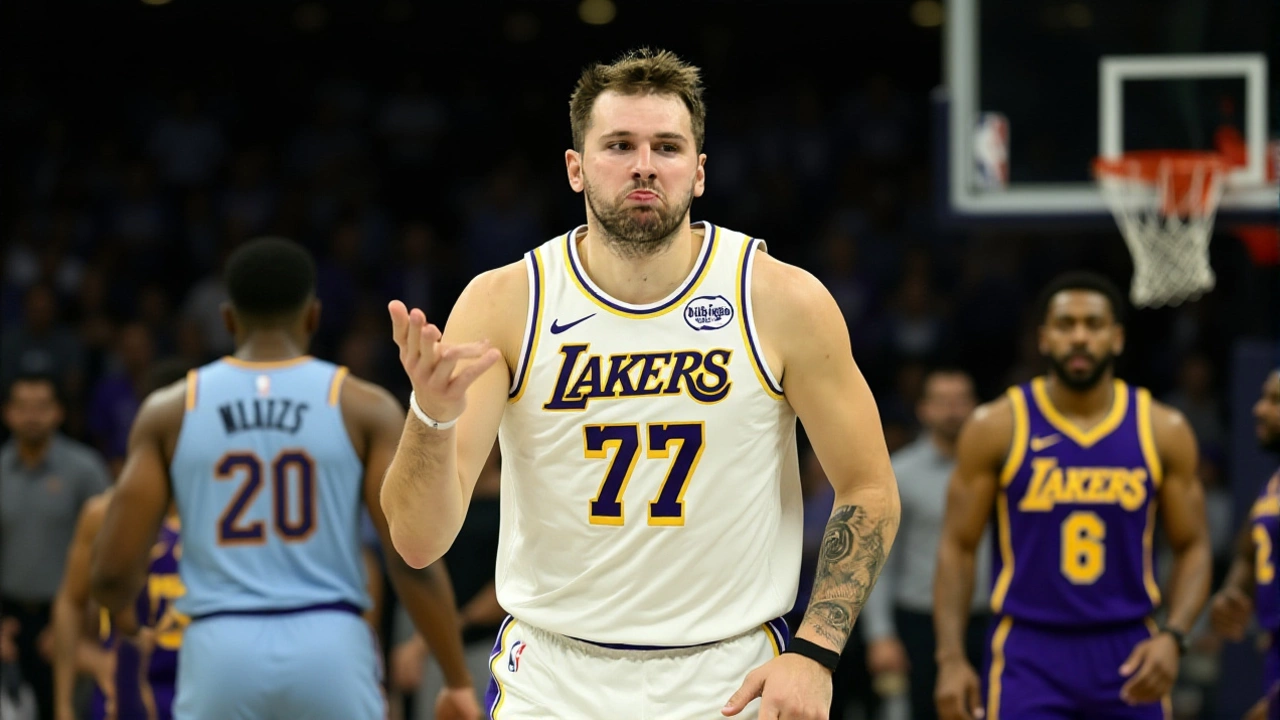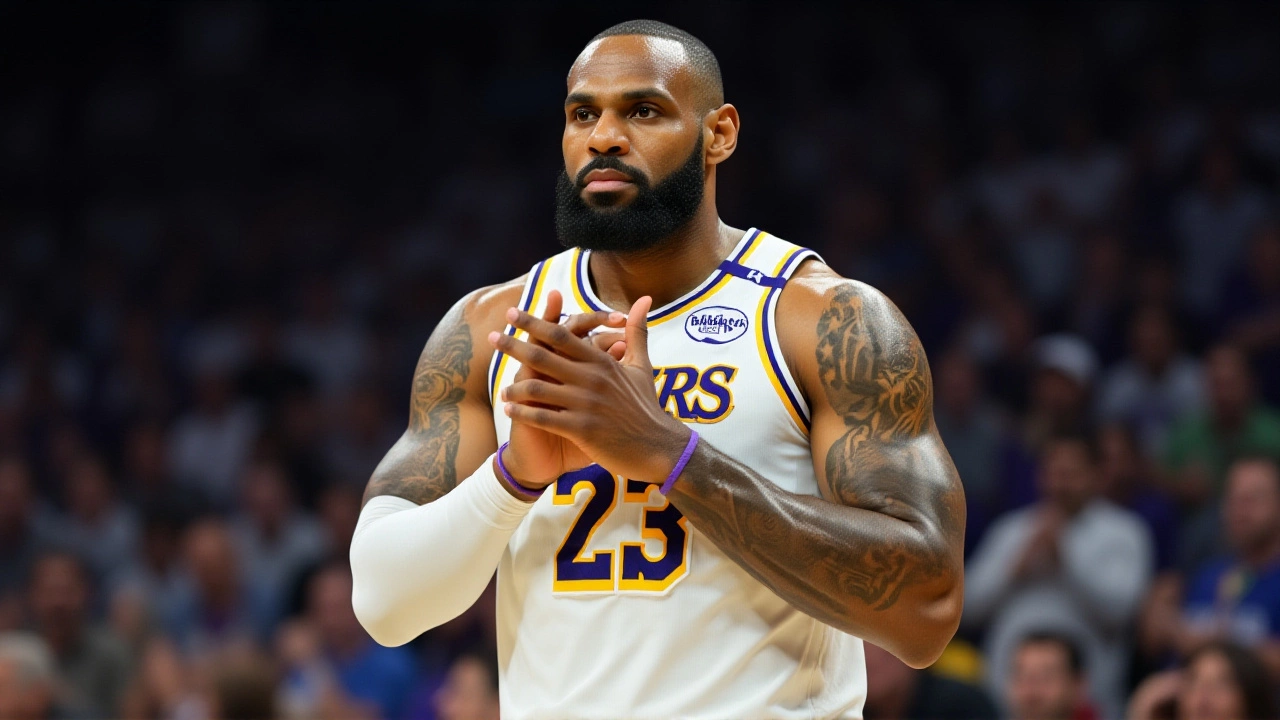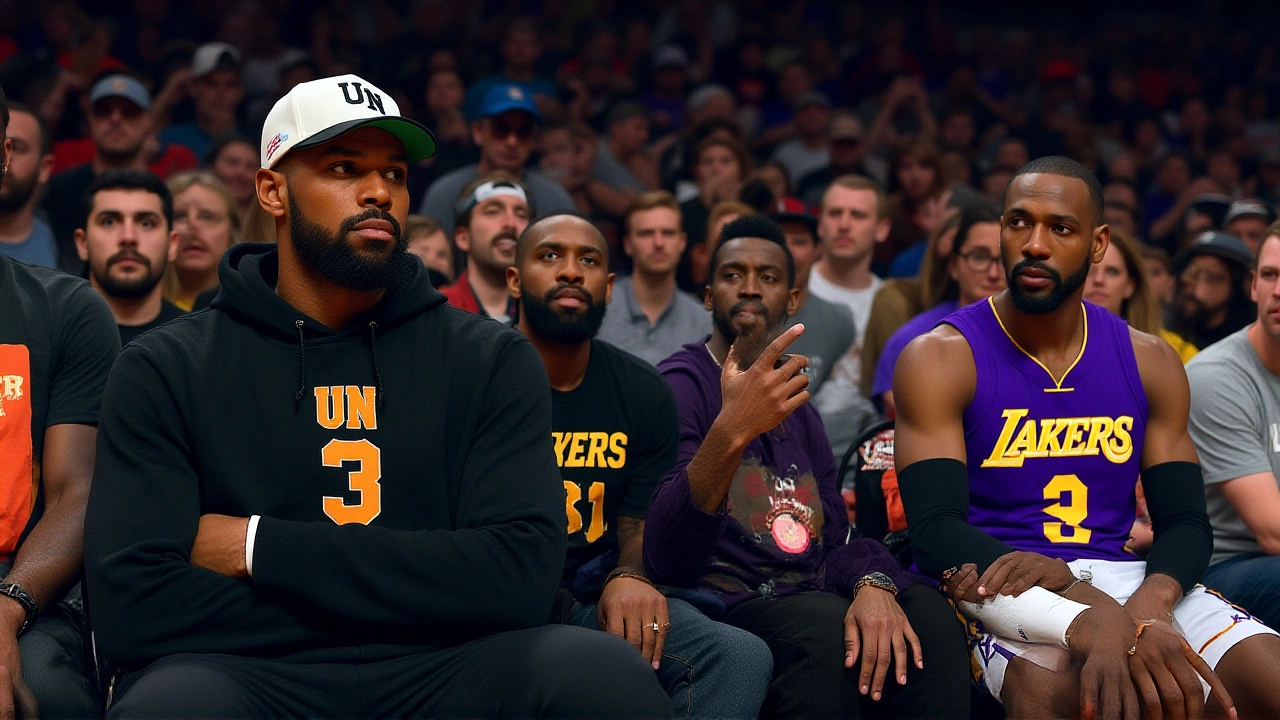Lakers Rout Jazz 140-126 Amid Confusion Over LeBron James’ Injury Status

The Los Angeles Lakers pulled away in the second half to crush the Utah Jazz 140-126 on Tuesday, November 18, 2025, at Crypto.com Arena in Los Angeles. The win wasn’t just a statement—it was a spectacle. The Lakers dropped 40 points in the second quarter alone, turning a tight game into a blowout. But beneath the fireworks, a strange fog hung over the arena: no one seemed to know whether LeBron James was even supposed to be playing.
How the Lakers Broke the Jazz’s Back
The Lakers didn’t just win—they dominated the tempo. After a sluggish 27-point first quarter, they exploded for 40 in the second, fueled by sharp three-point shooting and relentless ball movement. Austin Reaves and D’Angelo Russell combined for 58 points, while rookie Adou Thiero shocked the crowd with 14 points and 9 rebounds off the bench. The Jazz, meanwhile, looked exhausted. Their offense stalled after halftime, scoring just 22 points in the third—a season low for any quarter this year. Their defense? Nonexistent. Los Angeles shot 58% from the field, including 18-of-37 from deep.
Here’s the thing: the Lakers had no business winning this way. Not with half their rotation listed as questionable or out. Gabe Vincent, their primary perimeter defender, had been sidelined since October 28 with a left ankle sprain. Marcus Smart, the defensive veteran, was reportedly battling a fever. Rui Hachimura, their most reliable big, was limping through warmups. And yet, they still outscored a Jazz team that had been playing better than expected.
The LeBron James Mystery
The biggest question wasn’t who won—it was whether LeBron James was even supposed to be on the court. The NBA’s official injury report, updated at 1:30 PM Eastern Time on November 18, listed James as QUESTIONABLE with right sciatica. But Team Rankings, a widely trusted injury tracker, had him marked as OUT since October 16—with an expected return in mid-November. That’s a full week before the game even happened.
James played 32 minutes, scoring 24 points, dishing 8 assists, and grabbing 6 rebounds. He moved fluidly, drove hard to the rim, and even hit a step-back three in the fourth. No visible limp. No grimacing. No trainer on the sideline. Fans in the stands whispered: “Did he just play through sciatica?” Or worse—“Was the report wrong?”
The Lakers’ media relations team refused to comment. No press conference. No statement. Just a box score that didn’t mention his status at all. Meanwhile, the NBA’s injury database still showed him as questionable hours after the final buzzer. It’s not just sloppy—it’s concerning. When a player of James’ stature is misreported, it affects betting lines, fantasy leagues, and even team strategy across the league.

Utah’s Injury Woes Are Worse Than Expected
The Jazz weren’t just outplayed—they were decimated. Walker Kessler, their All-Defensive candidate, has been out since November 5 with a shoulder injury and is expected to miss the rest of the season. Taylor Hendricks, their most promising young forward, is out indefinitely with a hamstring tear. Georges Niang, their veteran floor spacer, hasn’t played since October 12. Kyle Anderson, their glue guy, was listed as questionable with lower back pain but still played 28 minutes.
“We’re running on fumes,” said Jazz head coach Will Hardy after the game. “We’ve got guys playing out of position who haven’t touched the floor in weeks. This isn’t about talent—it’s about survival.”
And yet, they kept fighting. Jordan Clarkson dropped 29 points. Lauri Markkanen had a near triple-double. But without Kessler anchoring the paint, the Lakers drove to the basket at will. The Jazz gave up 62 points in the paint—more than any game this season.
Why This Matters Beyond the Box Score
This isn’t just about two teams playing a game. It’s about the growing chaos in how injuries are tracked and reported across the NBA. The league’s official injury report is supposed to be the gold standard. But with teams like the Lakers and Jazz using third-party trackers like Team Rankings that often have earlier or more detailed updates, fans, analysts, and even front offices are left guessing.
And the timing couldn’t be worse. With the All-Star Game just three months away and the playoffs looming, inconsistent injury reporting could lead to mismanaged player loads, risky comebacks, and even lawsuits if a player is cleared improperly. The NBA’s medical staff has been under fire since last season’s Kyrie Irving and Joel Embiid controversies. Now, they’re facing another one—with the face of the league.
Meanwhile, the Lakers’ front office quietly celebrated. They’re now 11-6, sitting fifth in the Western Conference. But behind the scenes, they’re scrambling to finalize a medical protocol review. One source told ESPN: “We’re not hiding anything. We’re just not confirming what we don’t have to.”

What’s Next?
The next meeting between the Lakers and Jazz is scheduled for November 23, 2025, in Salt Lake City. Team Rankings already has injury projections up for that game—James listed as “Doubtful,” Kessler still out, and Smart still questionable. The Lakers are reportedly considering activating veteran guard De’Anthony Melton, who’s been rehabbing a hamstring strain since October.
For the Jazz, the path forward looks bleak. They’re 4-13. Their next five games are against playoff-caliber teams. Without Kessler or Hendricks, their defense collapses. And with Anderson and Clarkson carrying the load, fatigue could turn into injury.
One thing’s clear: this isn’t just about injuries. It’s about trust. In the NBA, when the numbers don’t add up, the game doesn’t just get harder—it gets dangerous.
Frequently Asked Questions
Why is there a discrepancy in LeBron James’ injury status?
The NBA’s official injury report listed James as QUESTIONABLE with sciatica on game day, but Team Rankings had him marked as OUT since October 16. This mismatch likely stems from differing reporting timelines—teams often update internal medical staff before public reports are filed. The Lakers have not clarified whether James was cleared last-minute or if the NBA’s report was outdated, creating confusion for fans and fantasy managers alike.
How did the Lakers win without key players?
Despite missing Gabe Vincent (ankle), Marcus Smart (illness), and Rui Hachimura (calf), the Lakers’ depth and offensive firepower carried them. Austin Reaves and D’Angelo Russell combined for 58 points, while rookie Adou Thiero delivered a breakout performance. The Jazz’s depleted defense couldn’t contain their ball movement, and Los Angeles shot 58% from the field—evidence that even a weakened roster can dominate with execution.
What’s the impact of Walker Kessler’s season-ending injury on the Jazz?
Kessler’s absence is catastrophic. He led the NBA in blocks per game last season and anchored a defense that was top-10 in efficiency. Without him, the Jazz allowed 62 paint points to the Lakers—their highest total of the season. His replacement, 20-year-old Jaylen Wells, is raw and prone to foul trouble. Utah’s win probability dropped 37% in games without Kessler, according to NBA Advanced Stats.
Is the NBA’s injury reporting system reliable?
Increasingly, no. Teams like the Lakers and Jazz use third-party trackers like Team Rankings that often update injury status hours or days before the NBA’s official report. This creates misinformation for bettors, fantasy players, and even opposing coaches. The league has acknowledged the issue but has yet to implement a unified, real-time reporting system—leaving fans in the dark and teams exposed to scrutiny.
When will LeBron James return if he was truly injured?
If James was truly sidelined by sciatica, his performance on November 18 was extraordinary. Sciatica typically requires 2–4 weeks of rest and physical therapy. His ability to play 32 minutes without visible discomfort suggests either a mild case, aggressive treatment, or that the injury was misreported. The Lakers’ medical staff has not released a timeline, but his next game is expected to be against the Clippers on November 25.
What does this mean for the Lakers’ championship chances?
The Lakers’ depth and offensive firepower suggest they can survive short-term injuries. But if James, Reaves, or Russell miss significant time later in the season, their ceiling drops dramatically. Their current 11-6 record is misleading—they’ve played a soft schedule. Their true test comes in December, when they face the Nuggets, Suns, and Timberwolves in a 10-day stretch. Without full health, a deep playoff run becomes unlikely.